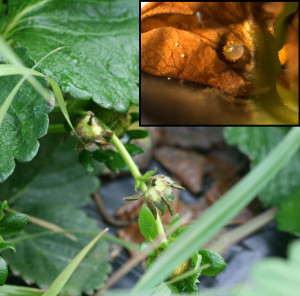Seeking Volunteers to Track Strawberry Clipper Weevils!
go.ncsu.edu/readext?403568
en Español / em Português
El inglés es el idioma de control de esta página. En la medida en que haya algún conflicto entre la traducción al inglés y la traducción, el inglés prevalece.
Al hacer clic en el enlace de traducción se activa un servicio de traducción gratuito para convertir la página al español. Al igual que con cualquier traducción por Internet, la conversión no es sensible al contexto y puede que no traduzca el texto en su significado original. NC State Extension no garantiza la exactitud del texto traducido. Por favor, tenga en cuenta que algunas aplicaciones y/o servicios pueden no funcionar como se espera cuando se traducen.
Português
Inglês é o idioma de controle desta página. Na medida que haja algum conflito entre o texto original em Inglês e a tradução, o Inglês prevalece.
Ao clicar no link de tradução, um serviço gratuito de tradução será ativado para converter a página para o Português. Como em qualquer tradução pela internet, a conversão não é sensivel ao contexto e pode não ocorrer a tradução para o significado orginal. O serviço de Extensão da Carolina do Norte (NC State Extension) não garante a exatidão do texto traduzido. Por favor, observe que algumas funções ou serviços podem não funcionar como esperado após a tradução.
English
English is the controlling language of this page. To the extent there is any conflict between the English text and the translation, English controls.
Clicking on the translation link activates a free translation service to convert the page to Spanish. As with any Internet translation, the conversion is not context-sensitive and may not translate the text to its original meaning. NC State Extension does not guarantee the accuracy of the translated text. Please note that some applications and/or services may not function as expected when translated.
Collapse ▲
Buds damaged by strawberry clipper weevil, and (inset) strawberry clipper weevil egg inside bud. Photo: Hannah Burrack
We are seeking strawberry growers willing to let us scout their fields for early season strawberry clipper activity. Graduate student Doug McPhie has spent the last two springs tracking strawberry clipper activity throughout North Carolina strawberry fields and has developed a degree day model we believe can be used to help time when they start damaging plants (by “clipping” developing flower buds). However, to be sure our degree day model works, we need to validate it this year by determining if it accurately predicts when clipper damage begins. To do this, we need to visit strawberry fields, starting now!
Timing clipper activity is very important for management. We do not recommend making preventative insecticide applications for clippers, and “rescue” insecticides must be carefully timed not only to when the pest is active but also to minimize exposure to pollinators that may be visiting blooming plants!
At each field visit, we will observe plants along 3-4 rows, count the total number of flower buds, the number of clipper damaged buds (if any are present), and remove any damaged buds to determine the age of egg or larvae inside. We expect to visit each farm 1-2 times during the next two weeks.
Please contact us (hannah_burrack@ncsu.edu) if you are interested in participating! We will share an update on how well the model works after we make these observations.
More information


